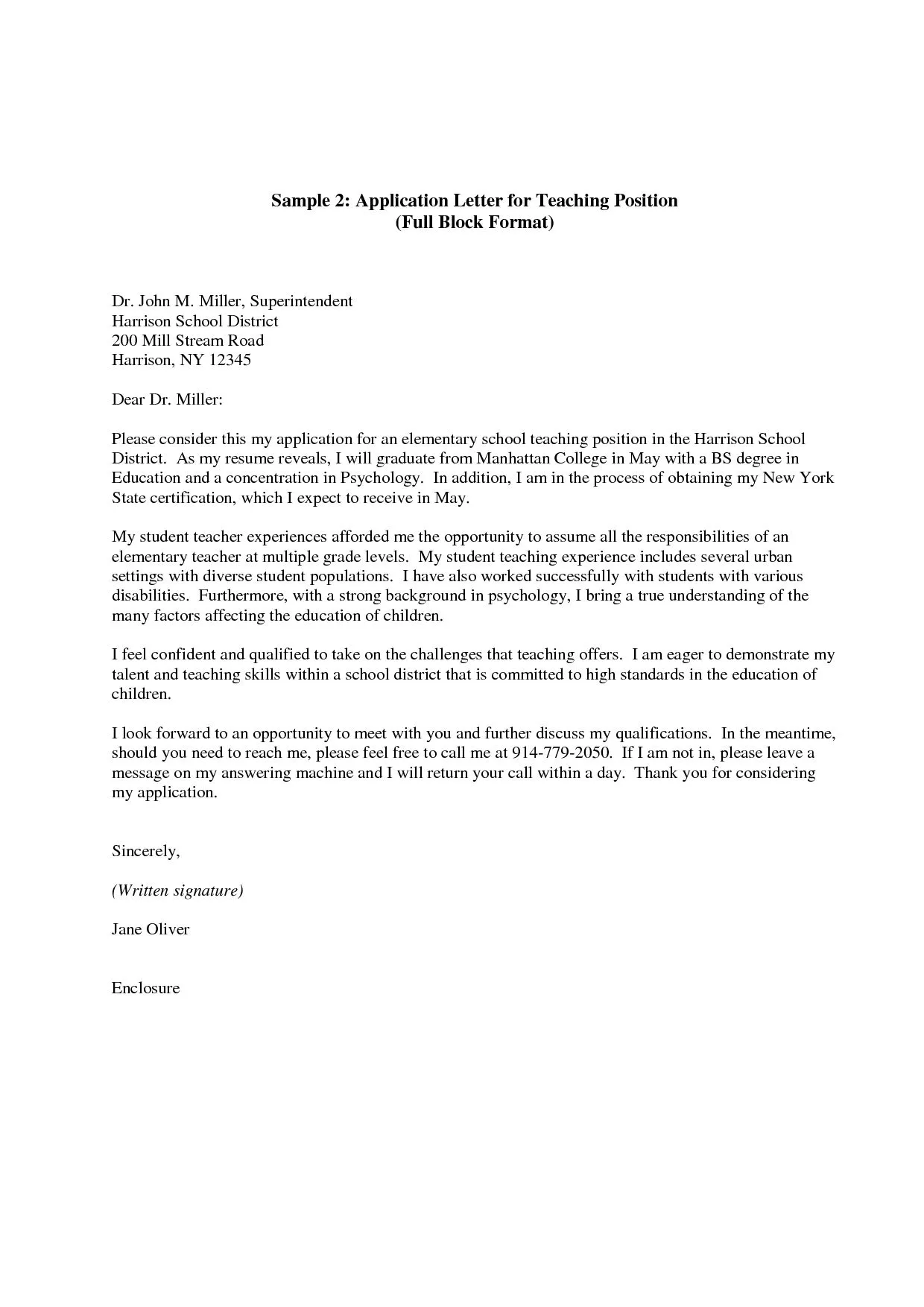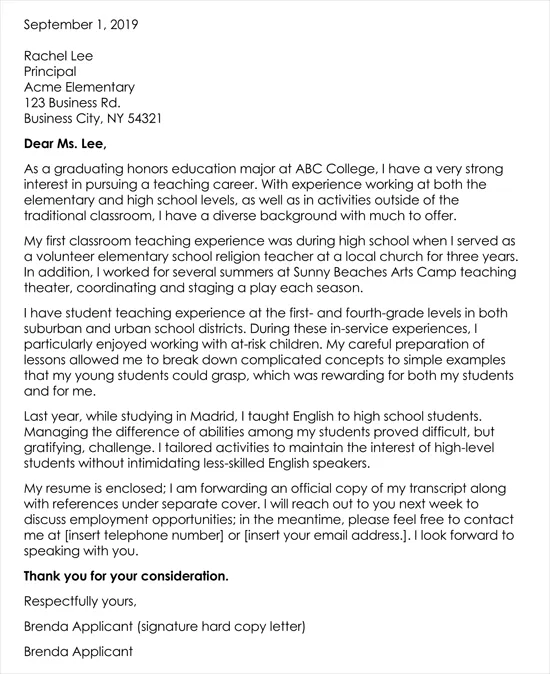Understanding the Importance of a Teacher Cover Letter
A well-crafted teacher cover letter is your first opportunity to make a strong impression on a hiring manager. It is much more than just a formality; it’s a crucial tool for showcasing your personality, passion for teaching, and relevant skills. In a competitive job market, a compelling cover letter can be the deciding factor in whether you get an interview. It serves as a preview of your qualifications and gives you a chance to connect with the school’s values and mission. A standout cover letter demonstrates your enthusiasm for the specific teaching position and highlights why you are uniquely suited for the role. It offers a platform to elaborate on your resume and provides context to your experiences, helping the hiring committee understand your teaching philosophy and your commitment to student success. A well-written cover letter tells a story, setting you apart from other candidates.
Key Components of a Successful Teacher Cover Letter
A successful teacher cover letter isn’t just a summary of your resume; it’s a personalized narrative that showcases your unique qualities. It should have a clear structure, be easy to read, and highlight your most relevant qualifications and experiences. Start with your contact information, followed by a professional greeting addressed to the hiring manager whenever possible. The opening paragraph should immediately grab the reader’s attention and state the purpose of the letter. Throughout the letter, you’ll want to demonstrate your enthusiasm and highlight the skills and experiences that align with the specific job requirements. This will include your qualifications, teaching philosophy, classroom management skills, and any special certifications or accomplishments. Be sure to mention the school’s name, and demonstrate how your values align with the institution’s mission. Finally, close by expressing your gratitude and including a strong call to action, such as a request for an interview.
Your Contact Information and the Date

Begin your cover letter with your full name, address, phone number, and professional email address at the top. This information ensures the hiring manager can easily reach you. Include the date below your contact information. This is essential for record-keeping and shows the letter’s timeliness. Ensuring these details are accurate and up-to-date is crucial. It’s a professional courtesy and shows that you pay attention to detail. Use a clear, easy-to-read font to make sure your contact information is easily accessible and legible. It should be the first piece of information that the hiring manager will see, and a professional presentation sets the right tone from the start. Double-check all the information to avoid errors that could prevent the hiring manager from contacting you.
Addressing the Hiring Manager Properly
Always address the hiring manager by name whenever possible. Doing so shows that you’ve taken the time to research and personalize your application. If you can’t find the hiring manager’s name, try to find it by looking at the school’s website, LinkedIn, or by calling the school. Use a formal greeting, such as “Dear Mr./Ms./Mx. [Last Name]”. If you can’t find the name, use a general greeting like “Dear Hiring Committee” or “Dear [School Name] Hiring Team”. Avoid generic greetings like “To Whom It May Concern” if you can. Personalization is critical for making a good first impression. It shows your attention to detail and your proactive approach. Remember to double-check the spelling of the hiring manager’s name. A small error here can have a negative impact and indicate a lack of attention to detail.
Crafting a Compelling Opening Paragraph
Your opening paragraph is your chance to grab the reader’s attention and immediately state your purpose. Start with a strong, concise statement that clearly states your interest in the specific teaching position. Mention where you saw the job posting and why it caught your attention. Briefly highlight a key qualification or experience that makes you a strong candidate. Demonstrate your enthusiasm for the role and the school. It is best to keep it short and impactful. This paragraph should capture the hiring manager’s interest and encourage them to keep reading. Make sure to tailor this to the specific job and school. Avoid generic opening lines. The opening should set a positive tone, demonstrating your interest and qualifications.
Highlighting Your Teaching Qualifications and Experience

Use the body of your cover letter to provide detailed information about your teaching qualifications and experience. Showcase your educational background, including degrees, certifications, and any special training. Highlight your teaching experience, including the subjects and grade levels you have taught. Use specific examples of your accomplishments to demonstrate your skills and abilities. Quantify your achievements whenever possible. For example, instead of saying you “improved student test scores,” state that you “increased test scores by 15% through implementing differentiated instruction.” Make sure to align your skills and experience with the specific requirements listed in the job description. Use keywords from the job description to show you’re a good match.
Showcasing Your Skills and Achievements
Detail your key skills that align with the job requirements. This includes classroom management, curriculum development, lesson planning, and communication skills. Provide specific examples of your achievements to illustrate your skills. Instead of just listing your skills, show how you have used them to achieve results. For example, describe how you successfully implemented a new classroom management strategy that improved student behavior. Mention any awards, recognitions, or special projects you have been involved in. Make sure to quantify your achievements whenever possible. This could mean detailing the percentage of students who improved their grades, or the specific ways you enhanced the learning environment. The more specific and detailed you are, the more impactful your cover letter will be.
Demonstrating Your Passion for Teaching
Demonstrating your passion for teaching is key to creating a memorable cover letter. Show enthusiasm for your subject area and for working with students. Describe your teaching philosophy and what motivates you. Share anecdotes or stories that illustrate your dedication to education. Explain how you create a positive and engaging learning environment for students. Show your commitment to ongoing professional development. Express your excitement about the opportunity to make a difference in students’ lives. Your passion should be palpable. By connecting with the reader on an emotional level, you distinguish yourself from other candidates. Let your personality shine through.
Aligning Your Values with the School’s Mission

Show that you have researched the school and understand its mission and values. Explain how your personal values align with the school’s goals. Highlight any specific programs, initiatives, or aspects of the school that resonate with you. Express your eagerness to contribute to the school community and support its mission. Demonstrate a deep understanding of the school’s culture. Tailor your letter to reflect the specific values of the school. Make sure your cover letter shows how you fit in with the school’s community. By demonstrating that you are a good fit, you increase your chances of getting an interview. This is essential for showcasing your long-term potential as a teacher at the school.
Writing a Strong Closing Paragraph
In your closing paragraph, reiterate your interest in the position and the school. Reiterate why you are a strong candidate. Express your gratitude for the reader’s time and consideration. Include a clear call to action. State that you are available for an interview and provide your contact information one more time. Thank the hiring manager and leave a positive lasting impression. Ensure the closing is professional, enthusiastic, and memorable. By ending with a strong close, you reinforce your key qualifications and make it easy for the hiring manager to take the next step. This will increase the chances of the school contacting you for the next stage of the application process.
Expressing Gratitude and a Call to Action
Conclude your cover letter by expressing gratitude to the hiring manager for their time and consideration. It is a professional courtesy that leaves a positive impression. Restate your interest in the position and your belief in your ability to make a positive impact. Include a clear and specific call to action. Request an interview and provide your contact information. Make it easy for them to contact you. This ensures the reader knows the next step you want them to take. By including a call to action, you increase your chances of advancing to the next stage of the hiring process. Make your intentions clear and easy to act upon.
